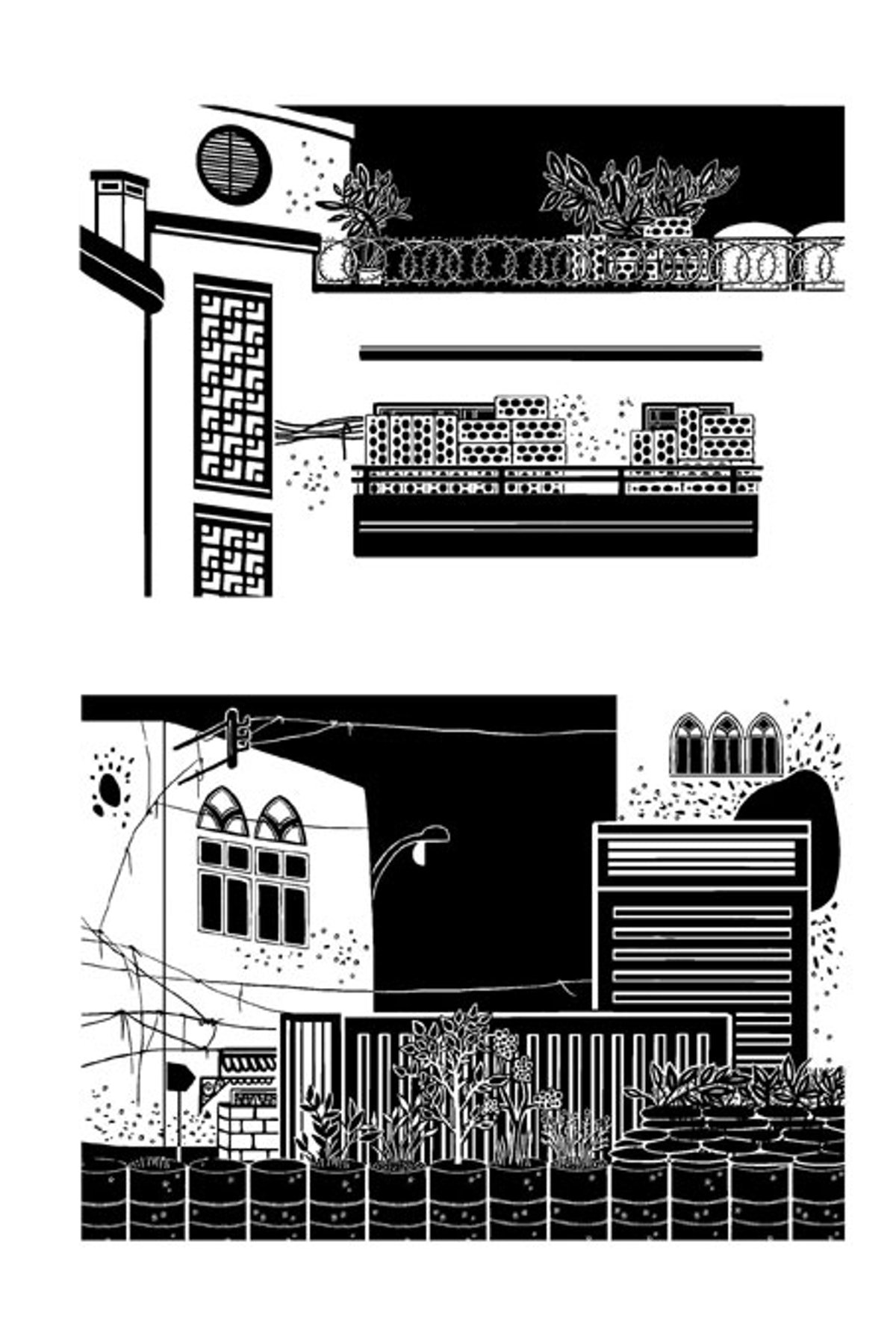REVIEW | A Game for Swallows by Zeina Abirached
AUTHOR: Zeina Abirached
TRANSLATOR: Edward Gauvin
GENRE: Graphic Memoir
ISBN: 0761385681
RELEASE DATE: Aug 2012
PAGES: 188 PAGES
WRITTEN LANGUAGE: French
EDITION LANGUAGE: English
★★★★
I read this book as part of the From and About Asia Reading Project.
Born in 1981, 6 years into the Lebanese Civil War, war became a norm in Zeina’s childhood. The life of her family and hers changed according to the progress of the war. They took shelter in their house, which eventually became a small room, and spend their days and nights there, along with their neighbors.
Illustration from the book, picture from internet
Beirut, the capital of Lebanon was cut into two sides during the war, the East Christians side, and the West Muslim sides. It’s a great danger for people to travel between sides. And one day, Zeina’s parents were out visiting the other side and didn’t make it back in time. This book was talking about how she and her brother spent the night with help from the neighbors, but it was not what I expected, in a good way.
Reading the blurb, I thought the book was majorly focusing on the story of Zeina’s family and how they survived in wartime. While it was about that, a larger part was telling the stories of her neighbors, how they came to live in the same building, and how they went by during the war.
Each neighbor had their own interesting and unique background. With black and white bold illustrations, we learnt about how and why they each came and lived in the building, how they provided for themselves, how they survived with extremely limited resources, to the details like what they needed to do to cross the street.
We also learnt about their understanding of the war. Some were more optimistic, some were not. But all tight close to their personal experiences.
This book, although small, provided me with more insights into how day-to-day people lived during the Lebanese Civil War compared to the chunky nonfiction I read on the topic of Lebanon. Let me see what people were looking and hoping for in the war.
It’s a quick but memorable read. And I also loved how the author illustrated based on some Arabic characters, and turned them into shapes and objects that were meaningful to her, and the story. I just wish there were translations to help me understand those characters when they appeared in the book. However, with illustrations and the typesettings, I think I got the essence of them after all.

